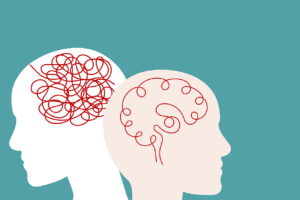
Body image across life span
Trigger Warning: Eating Disorders
There are common misconceptions held about eating disorders, creating a stigma around these illnesses. The best way to release that stigma and misunderstanding is through discussion and education about eating disorders, their symptoms, and causes.
Previous literature on eating disorders named poor body image as the leading cause for developing an eating disorder. Today the answer still is not clear, but researchers know the issue is much more complex.
Early studies utilized magazine surveys to gather information about body image. In1972, Psychology Today surveyed their readers and reported that 23% of women and 15% of men experienced dissatisfaction with their body image. In 1985, the survey was put out again and 38% of women and 34% of men were dissatisfied with their body image. In 1997, the percentages rose again: 56% of women and 43% of men said in surveys that they were dissatisfied with their body image.
Eating disorders don’t discriminate
This heightened body dissatisfaction suggests that issues with body image can happen to anyone, at any age. Body image research has suggested that women’s dissatisfaction with their bodies remains somewhat stable across the life span. Men and women can experience eating disorders at any stage of their lifetime.
While having a poor body image does not mean you have an eating disorder, poor body image can contribute to the development of disordered eating habits. Researchers believe this is because women compare themselves to peers around their age, rather than the thin, youthful images portrayed in the media.
Eating disorders affect 9% of the United States population, making 28.8 million Americans likely to develop an eating disorder during their lifetime.
Types of eating disorders
Add to the complexity that there is not just one type of eating disorder; they vary by severity and symptoms, just as they can affect anyone of any shape or size.
The National Eating Disorder Association lists 10 different types of eating disorders and their characteristics:
- Anorexia Nervosa
- Bulimia Nervosa
- Binge Eating Disorder
- Otherwise Specified Feeding or Eating Disorder (OSFED)
- Avoidant Restrictive Food Intake Disorder
- PICA
- Rumination Disorder
- Orthorexia
- Compulsive Exercise
- Diabulimia
Each disorder is characterized by different symptoms and behaviors surrounding food. Anorexia nervosa is the most common eating disorder, affecting 24 million people in the United States alone.
AN is characterized by extreme weight loss, dressing in layers to hide weight loss or stay warm, an obsession with weight, calories, fat grams, and dieting. People with AN tend to make comments about feeling ‘fat’ and are unable to maintain a healthy weight.
Eating disorder researchers have also used the term ‘anorexia nervosa of aging’ to refer to the changes in eating habits, appetite, and food intake that occur with age. AA affects 16–20% of people over age 65.
Older adults tend to eat smaller meals at a slower rate, which results in loss of body mass and a decline in energy intake. Older women tend to eat 30% less calories than younger women, those calories have 30% less fat and 40% less carbohydrates.
This can result in loss of muscle tissue, a decline in functional capabilities, decreased bone mass, micronutrient deficiencies, reduced cognitive function, increased hospital admission, immune dysfunction, poor wound healing, and even premature death.
Eating disorders and the brain
An article from the American Psychological Association outlines literature surrounding eating disorders and their effects on the brain. In a study on anorexia nervosa, researchers examined women with and without eating disorders using fMRI technology while they played a monetary betting game.
Researchers specifically examined the parts of the brain involved with the reward system. When women with AN won in the betting game, their reward processes were less active and when they lost, they were more active.
This study, along with many others, suggest that the reward system in the brain of individuals with eating disorders is altered, which affects behaviors and eating habits. This confirms the notion that eating disorders are not a choice, but instead a result of different biological processes that affect behaviors.
If you think you or someone you know is living with an eating disorder, the best thing to do is educate yourself. The National Eating Disorder Association and the Mayo Clinic are great places to start.
There is no shame in having an eating disorder and its power is not permanent. Many people can overcome eating disorders – the first step is asking for help.
ABOUT THE AUTHOR
Grace Weintrob is a senior majoring in Communication Studies with a minor in Stage, Sports, and Film Production at CSU. She is currently working as the digital media intern for the Columbine Health Systems Center for Healthy Aging.





